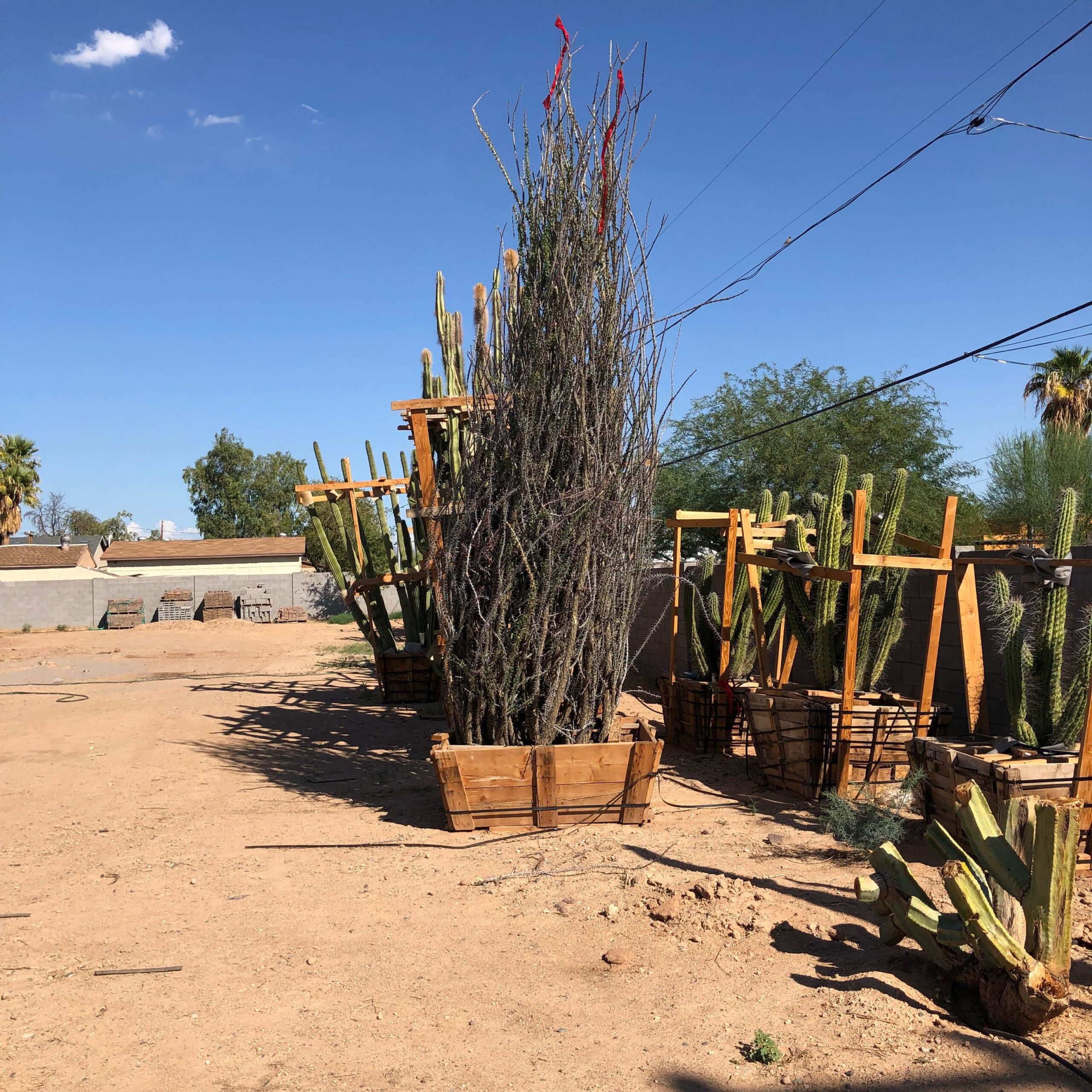When one wanders through the arid landscapes of the American Southwest, a striking plant often catches the eye. The Ocotillo, with its elongated, spindly branches clad in vibrant green foliage and bursting red blooms, raises an age-old question: Is it truly a cactus? Understanding the taxonomy and characteristics of this enigmatic plant is vital for appreciating its unique beauty and ecological role.
Though the Ocotillo’s aesthetic appeal suggests a kinship with cacti, it belongs to a distinct family known as the Fouquieriaceae. This family was named after the French botanist, Pierre Fouquier, who examined these extraordinary plants. The Ocotillo’s Latin name, Fouquieria splendens, evokes images of splendor and elegance, further accentuating its captivating presence in desert landscapes. Contrary to popular belief, the Ocotillo is not a cactus; instead, it is a flowering plant more closely related to the bougainvillea than the iconic saguaro.
Classifying the Ocotillo requires an exploration of its characteristics and ecological adaptations, which distinguish it from the more familiar members of the cactus family.
The Structure of the Ocotillo: A Botanical Paradox
One of the most intriguing aspects of the Ocotillo is its morphology. Unlike cacti, which typically have thick, fleshy stems designed for water storage, the Ocotillo features long, slender, and rigid branches that can reach up to 20 feet tall. This plant radically alters its appearance with the changing seasons. In spring and summer, it flaunts lush green leaves that provide an alluring contrast against the backdrop of the sun-baked desert. However, during arid periods, it will shed these leaves to conserve moisture, appearing skeletal and barren.
This remarkable ability to adapt to its environment is a testament to the Ocotillo’s resilience. The plant employs an efficient system of shallow roots that extend laterally to maximize water absorption from infrequent rains. During blooming periods, clusters of tubular, scarlet flowers erupt from the tips of its branches, attracting hummingbirds and other pollinators, thus creating a dynamic interplay between plant and animal. This convergence of form and function is a hallmark of its evolutionary success.
Ocotillo vs. Cactus: The Distinctive Differences
While cacti are well-known for their specialized ribbed structure and unique adaptations like spines and pads, Ocotillo diverges significantly in form and function. A quintessential feature of cacti is their epidermis, which is typically covered in spines. In contrast, the Ocotillo showcases smooth, elongated stems adorned with small thorns, rather than spines, which serve to deter herbivores from consuming its leaves and flowers. It’s this difference in physical protection methods that sets the Ocotillo apart from its cactus counterparts.
Moreover, the type of flowering presents another substantial difference. Cacti exhibit a range of floral adaptations characterized by complex structures and diverse forms, whereas Ocotillo flowers are essentially tubular, designed to attract specific pollinators, particularly hummingbirds, who possess the hovering ability to access their nectar. This relationship underscores the fundamental differences in reproductive strategies between these two plant families.
The Aesthetic Appeal of Ocotillo in Landscaping
Despite its botanical classification as a shrub rather than a cactus, Ocotillo has forged a magnificent reputation in the landscaping world. Gardeners and landscape architects are drawn to its dramatic silhouette and the riot of color it brings to arid gardens. When planted in a sun-drenched area, Ocotillo will thrive while providing a striking focal point. It pairs elegantly with other desert flora, creating an enticing visual tapestry that reflects the wild beauty of the Southwest.
In addition to its ornamental value, Ocotillo supports the local ecosystem. Its blooms provide essential sustenance for pollinators, while the plant’s structure offers shelter for various wildlife. By integrating Ocotillo into landscaping designs, one does not merely introduce an aesthetically pleasing element but also contributes to biodiversity and ecological health.
Beyond Aesthetics: The Cultural Significance of Ocotillo
For centuries, Ocotillo has held a place of respect in the cultures of the indigenous peoples of the Southwestern United States. The plant is often intertwined with traditional narratives and is recognized for its utility as a source of food, medicine, and material for crafts. The vibrant flowers of the Ocotillo herald the arrival of spring for many tribes, symbolizing renewal and abundance.
Understanding Ocotillo’s role in these cultural contexts adds layers to its appreciation beyond mere appearance. It is a testament to the harmonious relationship between humans and the plants that sustain them, showcasing the multifaceted nature of this remarkable species.
As we unravel the layers of Ocotillo’s identity, it becomes increasingly clear that this unique plant defies easy classification. By recognizing its characteristics and ecological significance, one gains a deeper understanding of its role in the intricate tapestry of desert life. The next time one encounters the alluring Ocotillo, take a moment to appreciate not just its beauty, but also the story it tells—a narrative woven through the threads of adaptation, resilience, and connectivity within the vibrant desert ecosystem.





Leave a Comment